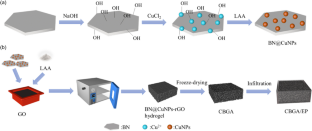Copper Modified Boron Nitride And Graphene Combined To Self-Assemble Three-Dimensional Thermal Conductivity Framework to Improve the Thermal Conductivity of Epoxy Resin
Abstract
With the development of integrated circuits and the miniaturization/ integration of electronic devices, heat dissipation solutions have become an increasingly important issue. The thermal conductivity of polymer-based thermal management materials is typically influenced by the amount of incorporated fillers. However, an innovative solution to increase the thermal conductivity without increasing the total filler content is the improvement of the filler connectivity by using specific surface modifications. Surface modifications using thermal conductive submicron particles can reduce the interfiller distances, acting as thermal bridges between the particles. In this paper, copper submicron particles modified BN (BN@CuSMPs) have been prepared by in situ reduction and mixed with graphene oxide (GO). A three-dimensional BN@CuSMPs/rGO aerogel (CBGA) framework with "point-surface" connection has been prepared by using the self-assembly mode of GO. CBGA/EP composites were then prepared using epoxy resin (EP) as matrix and a vacuum assisted impregnation method. The thermal conductivity of CBGA/EP composites has been found to be 1.918 W m−1 K−1 using a filler content of 19.61%, which was 12.8% higher than that of BN/rGO/EP composites and 909.5% higher than that of pure EP. The thermal resistance of the composites was analyzed using the Foygel model. It was found that the introduction of CuSMPs effectively decreased the thermal resistance between the BN particles, forming a thermal conductive three dimensional network inside the polymer-based material system.


 求助内容:
求助内容: 应助结果提醒方式:
应助结果提醒方式:


